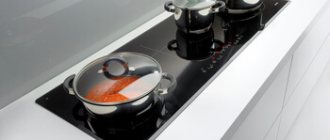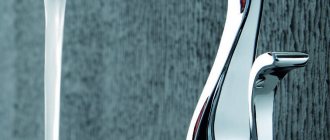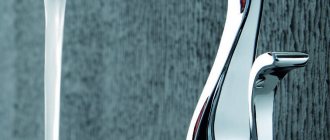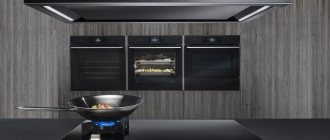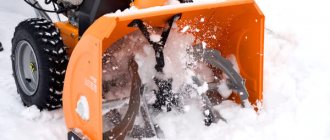The gradual spread of small farms and gardens has led to an increase in demand for compact unified agricultural machinery. Small-scale mechanization tools include mini-tractors that can perform a wide range of work related to land cultivation, territory cleaning or other engineering tasks.
A large selection of special equipment, a significant range of prices and a variety of technical capabilities complicate the selection of a suitable model. The rating of the best will help you choose a mini tractor for your dacha in 2021.
Features of mini tractors
This type of equipment is similar to standard models, but is different from what farmers and agricultural businesses use. Therefore, you need to understand all its features in order to make a decision and make sure that this option is suitable for the work that needs to be done:
- Small dimensions. The sizes are different: from small ones, almost no different from a walk-behind tractor, to quite large ones with a standard track and large wheels on the rear axle, like conventional models. This provides high maneuverability, which is important for small areas and confined spaces.
- Low power. Mini-equipment has a lower towing class than standard tractors, since it performs work on areas ranging in size from several hundred to 5 hectares. For such areas, full-size tractors are not needed.
- Economical. Small engines consume much less fuel. The design is much simpler, which makes maintenance and repair easier. Spare parts are also cheaper.
- Different models. It all depends on the purpose of use and size. Most models do not have a cabin, but if desired, you can find a closed version. It is chosen by those who need to work in bad weather or in winter.
- Wide range of work performed. Small tractors are not inferior in functionality to full-size ones. But the attachments are usually much smaller so as not to overload the engine and transmission. Determine in advance what kind of hitch is needed, look for a model that is suitable for the specific use.
- Prices are much lower than standard models. This applies to both the equipment itself and the attachments.
Advice!
Find out in advance whether you need rights to operate the equipment. Most models can be operated without training, but some will require a permit.
Find out if there are service centers and what the situation is with spare parts. Very often it turns out that if a breakdown occurs, you have to wait 1-2 months for the delivery of parts, the equipment sits idle. Another point is the cost of spare parts, which is often high for inexpensive models; the initial savings result in large costs for maintenance and repairs.
Types of equipment
All options are divided into three classes depending on size and power. Equipment is also classified according to its main area of use, since its purpose varies. You need to choose the right type of mini-tractor and only then consider all the models from the appropriate class. Main classes:
- Easy. Typically, the engine power does not exceed 5 kW, the equipment is small in size and maneuverable. Suitable for limited space, buy for plots of no more than 2 hectares. The parameters are similar to walk-behind tractors, with the difference that there are two axles and you can work while sitting, you don’t need to walk nearby.
- Average. More powerful power units allow you to cope with most jobs on a small farm and large garden plots. A universal solution that allows you to carry out most jobs, while the dimensions are much smaller than standard tractors, so it is easier to control and turn around.
- Heavy. This option is also small in size, the motor power exceeds 40 kW, which allows you to perform almost all the work that conventional equipment does. But at the same time, the attachments are smaller, this helps not to overload the motor. Most often they are equipped with cabins.
Advantages of mini tractor equipment and scope of its application
A minitractor for a summer residence, being a multifunctional device, in addition to the basic agricultural operations - plowing, harrowing the surface layer of the earth, performs the following work:
- mowing grass for the purpose of preparing it for hay or haylage;
- improvement of lawns;
- placement of fertilizers and seed material;
- irrigation of the utility plot;
- formation of beds;
- extraction of root crops from the soil;
- snow removal of areas of personal and industrial significance;
- laying trenches of various configurations and depths;
- digging holes for planting fruit tree seedlings;
- transportation of goods between fields, farms and settlements;
- unloading and loading tasks.
Of course, there is no better assistant for a farmer.
The advantages of mini tractors are:
- compactness;
- light weight – provides high maneuverability, ease of control, reduced impact on the pedosphere, which is no less important in the context of greening agricultural production;
- economical consumption of fuels and lubricants;
- labor productivity;
- ease of maintenance;
- reasonable price: a mini tractor is cheaper than conventional tractors.
It is also important that it is advisable to use mini tractors not only on the scale of a small personal household, but also in agricultural firms whose area reaches 20 hectares. In addition, as cargo carriers they can handle weights of up to 1.2 tons.
Attachments
The kit may include several elements, but the main part must be purchased separately. It is not necessary to take the entire kit at one time, as the costs will be high. Can be purchased separately as needed. Attachment options:
- Plow. It can be one, two or three-body. It differs in configuration, method of fastening and depth of processing.
- Rotary cutter. For cultivating soft soil. The design consists of a body with rotating blades. The width varies depending on the power of the tractor.
- Cultivator. A device for leveling a plowed field and breaking up large clods.
- Potato digger. It can be either single-row or double-row. Powered by power take-off shaft.
- Potato planter. Most often, the system plants two rows at the same time.
- Sprayers. There are different ones: for treating fields against pests, for feeding or working with fruit trees.
- Mower. The designs differ in operating principle; they are selected according to the type of mini-tractor hitch.
- Hiller. Used when growing potatoes and other crops that require the formation of ridges.
- Trailer. The design is single-axis, but can also be bi-axial.
- Utility brush for sweeping asphalt and sidewalks.
- Plow for snow removal. Available with front and rear mounting.
There are many options; there are special units that are used by utilities or enterprises with a specific nature of work. For a personal plot, you don’t need the entire list; you shouldn’t take everything at once, so that the attachments don’t lie around later.
The smallest
MTD MiniRider 60 SDE
pros
- reliable manufacturer
- cutting height adjustable
- discharge through the side deflector
- maneuverability
Minuses
- power 5.2 l. With.
From 118990 ₽
A small automatic lawn mower will allow you to easily handle medium to large lawns. Reliable American engine with a power of 5.2 liters. With. starts with an electric starter. The compact farm implement is amazingly maneuverable, and the open steel frame allows the operator to easily get on and off the mini tractor.
AL-KO Solo R 7-62.5
pros
- compactness
- maneuverability
- power
- long service life
- safety
Minuses
- no headlights
From 150000 ₽
The top smallest tractors included the Solo R 7-62.5 model, designed for cultivating small garden areas. The width of this machine is only 78 cm, which allows it to pass through an open gate. The unit is equipped with a mechanical transmission, thanks to which the driver himself sets and maintains the speed. The grass collector is emptied using a special lever from the driver's seat.
What to look for when choosing
There are a number of factors that need to be taken into account when purchasing, this will help you get a model that will fit, but will not cost too much. A good option is to talk to those who use the equipment and learn about the nuances that appear during operation. Main nuances:
- Dimensions of equipment. For a small area, it is better to take the most compact modifications in order to move freely and save space. Think about what maximum dimensions a mini-tractor should have for normal operation.
- Power of the power unit. Typically engines produce from 10 hp. and more. The larger the equipment, the higher the performance should be. But an overly powerful engine is undesirable, as it will consume much more fuel.
- Drive unit. In the cheapest models, power is transmitted only to the rear drive. There are four-wheel drive tractors, as well as those where you can engage or disengage the front axle with a transfer case. The latter option is the most preferable, as it saves fuel compared to solutions with permanent all-wheel drive.
- Transmission. The most important thing here is the gearbox; it must have enough speeds for different operating modes. It is necessary to clarify the minimum and maximum speed, this is important when transporting goods and driving between areas located at a distance.
- Fuel type. Gasoline engines are cheaper and easier to maintain. But diesel engines consume less fuel and provide more effort at low speeds. You should choose according to the situation. But if you have to use the equipment in winter, it is better to take the gasoline version, as it is much easier to start in the cold season.
- Controls and possible adjustments. The easiest way is to sit down and check whether it will be convenient to work behind the wheel of a mini-tractor or not. It is important that the seat has adjustments and shock-absorbing mounts.
- Design of the rear linkage and power take-off shaft. The configuration must be suitable for the equipment that will be installed during operation. Take into account the weight of the units, buy a tractor with hydraulics that will be able to raise and lower them.
- Workmanship. It is necessary to carefully inspect the equipment; usually cheap and unreliable equipment can be seen immediately by poor surface treatment, problems with the paintwork and other signs. Choose one of the models, and then read the reviews, so you can’t go wrong with buying a mini tractor for your site.
- Equipment. An important point that should not be overlooked. The same option is sold with different quantities of attachments, the price depends on this. The kit should include a set of maintenance tools and detailed instructions in Russian.
Advice!
Check the ease of mounting the equipment on the hitch and the operation of the power take-off shaft.
After purchase, study the instructions, run the engine properly, its service life depends on this. Some companies conduct a test run before sale, so the equipment can be used immediately after delivery to the site. It is worthwhile to carefully inspect the engine for leaks and ask that it be started during inspection.
Comparison table of characteristics
| Product Name | Engine power | Fuel tank volume | Guarantee period |
| Fighter T 22 | 18 hp | 9 l | 1 year |
| Shibaura SX 21 HST | 21 hp | 29.5 l | 2 years |
| Belarus 132H | 13 hp | 6 l | 1 year |
| Scout T 18 | 18 hp | 9 l | 24 months |
| Mitrax T10 | 15 hp | 3 l | 1 year |
| Rossel XT 152D | 15 hp | 6 l | 12 months |
| Uralets 220 | 21 hp | 17 l | 12 months |
| Grasshopper GH 220 | 22 hp | 10 l | 12 months |
| Caliber MT 120 | 12 hp | 6 l | 1 year |
| Dong Feng DF-240 | 24 hp | 25 l | 24 months |
Choosing a mini-tractor for personal use is a responsible process in which the following factors should be taken into account:
- dimensions and weight of the mechanism;
- performance and fuel consumption;
- availability of spare parts and the possibility of undergoing maintenance at a service center;
- build quality and certificate availability;
- range of possible attachments.
This review, compiled taking into account customer reviews, technical characteristics and recommendations, will help you choose the best model of the mini-version of the tractor.
What is the difference between a mini tractor and a walk-behind tractor?
As mentioned earlier, the main difference is the greater power of the first and, as a result, higher productivity. So, in terms of power, mini tractors begin where walk-behind tractors end. Thus, the most powerful and heaviest walk-behind tractors can compete with light mini tractors in terms of performance and ability to handle hard soil. However, power is not their only difference. In addition, the two types of technology differ in the following nuances:
- Method of use . When driving a mini tractor, the operator sits in the seat of the machine and controls it using the steering wheel, pedals and gear shift lever - just like in a regular car. The level of load on a person is minimal; the machine bears all the weight. When using a walk-behind tractor, the operator follows the equipment, holding the control levers in his hands and independently adjusting the depth of tillage. Needless to say, the need to keep a powerful machine in check requires proper physical training from the operator. This places a considerable load on a person’s back and arms, and even a physically strong person is unable to work in this mode for a long time.
- Price . It is not surprising that mini tractors are much more expensive than walk-behind tractors, because they are much more complex and productive machines. On average, on the Russian market the price of walk-behind tractors starts from 30 thousand rubles for light ones and can reach up to 500 thousand rubles for the heaviest ones. At that time, mini tractors in our country cost on average 300 thousand rubles and more, while the price of the most expensive copies can reach up to 5 million rubles.
Owner reviews
Egor, 39 years old:
Hello. Two years ago I purchased a walk-behind shovel LM-100. I'm sticking to the Neva. During operation, I discovered that things would go more efficiently if weights of 10 kg each were attached to the wheels of the walk-behind tractor. More weight of the walk-behind tractor means more weight of snow can move the blade. In addition, in loose, high snow, it is better to use lugs.
Victor, 41 years old:
I use the blade to the Centaur, the angle of attack is adjustable left and right (30 degrees) and straight. The set includes knives - steel and rubber. The canopy saves both from snow and from dirt - in the summer and autumn I collect heaps of garbage from the garden. The simplicity of the design and the price are amazing!
Yuri, 44 years old:
I didn’t want to spend money on buying a finished product, so I decided to make it myself. In my father’s bins I found a gas cylinder, pipes, corners and work began to boil. I found the drawings on the Internet, did a little digging, and came out with a pretty good blade.
Homemade dump
Self-dumps for agricultural machinery (motoblocks, tractors, ATVs, etc.) significantly facilitate the process of snow removal. This is especially noticeable with large piles. Any snow-clearing “gadget” for equipment consists of three elements: a working element that is in contact with the snow, a mechanism for adjusting the angle of rotation, and a fastening unit with the equipment.
Although factory models have many different types of designs for any agricultural device, self-assembly of a snow clearing element is simple and can significantly save money.
With the help of a homemade device, you can not only remove snow in winter, but also remove debris, level the area and other necessary functions.
It doesn’t matter what design the owner uses - a factory one or a do-it-yourself blade. In any case, it will have three positions:
- slope angle to the left 30 degrees;
- slope angle to the right 30 degrees;
- straight position.
Before starting snow removal work, the shovel blade should be installed in the desired position, based on three possible ones. After determining and establishing the required position, it is fixed using metal cotter pins. The width of the snow throwing area is usually one meter, but provided that the thickness of the steel used is 3-4 millimeters.
What is better to buy a walk-behind tractor or a mini tractor?
Cultivation of the soil, planting, harvesting and other agricultural joys are something that any owner of a personal subsidiary plot, farm, garden plot or cottage encounters several times every year. On a small plot of up to 10 acres, all work on the ground can be done manually without any problems . But what if you need to cultivate large areas? In this case, it is impossible to do without mechanization of manual labor. At the same time, many beginning farmers may be confused about what type of equipment to choose for their farm? To answer this question, we will briefly examine the two main types of agricultural machines for this type of work.
Transmission parameters
Number of gears. A kind of standard that ensures comfortable work with a walk-behind tractor is the presence of at least two gears for moving forward, one for moving in reverse.
Recently, many manufacturers are deviating from this postulate and equipping their walk-behind tractors with gearboxes with a large number of shift stages, which gives the user the opportunity to more flexibly control the speed and traction on the drive axle of the walk-behind tractor. On sale you can find models with eight steps for moving forward and four for moving in reverse.
Gearbox type. By means of a gearbox, the torque is transmitted from the engine shaft to the drive axle and the active attachments of the walk-behind tractor. There are several types of gearbox design:
- Chain. Torque is transmitted from the engine to the drive axle via a chain drive. This is a cheap and fairly reliable way to implement a gearbox. Its advantages include the simplicity and relative reliability of the design. Disadvantages include intolerance to excessive stress. When a high load is applied to a chain, it tends to stretch and may break. In addition, in this type of gearbox only one gear can be implemented for moving forward and backward.
- Worm. The simplest and cheapest way to transmit torque. Since there is nothing more in the system except the worm shaft and the gear it drives, such a gearbox has a fairly high efficiency (98%). However, the resource of the node is very limited and highly depends on the operating conditions and the efforts applied to it. There is no gear change. The speed of rotation of the wheels directly depends on the engine speed.
- The gear-chain reducer has high reliability and service life. The moment from the main gear, as in the case of a chain gearbox, is transmitted to the drive axle by a chain, but the change in the gear ratio occurs by engaging certain pairs of gears. It is in this type of gearbox that the gear shift mechanism is most simply implemented. The weak point is still the same - the chain drive as part of the gearbox.
- Gear reducer. The most expensive and most reliable method of delivering torque to the drive axle. It has high reliability and service life. At the same time, this is the noisiest solution.
If you plan to use the walk-behind tractor in conjunction with active attachments, the best choice would be a model equipped with a gear-chain or gear reducer.
Clutch type. The clutch assembly is an important element of the transmission of any walk-behind tractor. Its task is to transmit torque from the engine shaft to the input shaft of the gearbox (gearbox). Moreover, not just transmission, but timely closing and opening of the mechanical connection between the engine and the gearbox according to user commands. There are several types of clutch:
- belt;
- V-belt;
- disk;
- multi-disc;
- frictional
Most often in the design of a walk-behind tractor you can find either a belt or disk type of clutch. The belt clutch is characterized by its simple and uncomplicated design. The engine shaft and the input shaft of the box are connected to each other by a conventional ribbed or ribbed belt.
When the clutch lever is depressed, the belt is not tensioned and simply slips along the engine shaft pulley. When the lever is released, the belt tension mechanism is activated, and rotation is transmitted to the gearbox shaft. Already from the description of the work, the weak points of this design are visible:
- low efficiency, since a lot of rotational energy is spent on friction;
- the impossibility of transmitting large torque, the belt will slip, heat up and eventually simply break. For this reason, a belt clutch is not used in conjunction with a powerful power plant.
However, the belt clutch itself is very simple and incredibly repairable. You just need to have a spare belt, and repairs can be carried out in the field. Buying spare parts won’t hurt your pocket either.
The situation is somewhat different with disc types of clutches. Their operating principle is based on the ability to control friction forces. The driven disk is pressed against the driving disk with great force, resulting in a strong mechanical connection for transmitting torque.
The disc-type clutch is extremely reliable and, when used correctly, does not cause much trouble for the operator. Disadvantages include the high cost of the design and the impossibility of carrying out repairs in the field.
selection of equipment (mini tractor vs MB)
Dear colleagues, help! He blew the minds of himself and those around him. For a mechanical assistant. I can’t decide what I need – a mini tractor (which one) or can I get by with a walk-behind tractor (which one). Tasks:
- two adjacent plots of 30 acres each. Well, or one 60. There are no plans for special vegetable gardens, but it’s hard to say what will happen in a couple of years now. But two or three beds plus a greenhouse will be on both.
- both still need to be planned, soil brought in, paths made, etc. That is, landscape design (not on a computer, but on a bulldozer). It will take more than one year, not even in terms of ideas, but in terms of implementation and finances.
- clear snow in winter. Now the cheapest 6 hp snow blower can cope with one area, but it takes a long time and is a bit difficult for both him and me. The street is cleaned regularly, but you never know.
- There are plans for a bathhouse, which means we need to bring firewood. There are forests all around, you won't have to travel far.
- The neighbors don’t have many vegetable gardens, but you can have some fun, after all, it’s a village.
What will be the opinions?
P.S. I decided for myself a new Foreman TU220, but it’s a bit expensive, plus the canopy costs money separately, or the T-25 is very used, but in good condition (cheaper and more accessible, but you’ll be lucky to buy it).
Svan wrote: identified a new Foreman TU220
Can you fit into the greenhouse on it? The best option for your volume (in my opinion) is a good light motor-cultivator for “fine” work and a heavy walk-behind tractor for everything else. With a walk-behind tractor, you will plow, cultivate the beds, and bring firewood. And with a snow dump you push the snow from the yard onto the arable land.
Thank you, your opinion has been accepted. There is one factor in favor of 4 wheels - buy something for a long time, with a reserve for the future, and (most importantly!) I am not getting younger and healthier, especially my back. And the difference between “you are dragging” and “they are dragging you” is very great. I will move into the greenhouse, the structure will have the ability to open sideways either the entire frame or element by element specifically for the purpose of mechanized processing.
If there is no traffic police in the village, then you can use a tractor. Although they buy a tractor more for livestock - mowing, bringing hay. And how will it start in winter?! It’s still a diesel, but you can buy the MB with gasoline.
Swan wrote: and (most importantly!) I am not getting any younger or healthier, especially my back.
Heavy MB MTZ, AGRO, MS with a cutter to help and your back doesn’t hurt. These MBs are not carried around. You can make/buy an adapter and everything attaches to the adapter. The snow also pushes. And Grandfather is right about the T-25. There is a photo on the forum of MB with a cutter in a greenhouse.
Swann wrote: the difference between “you are dragging” and “they are dragging you” is very great.
Certainly. It is not clear only if the choice is made, why ask. I won’t persuade you, I’ll just say that they work on walk-behind tractors while sitting. And a tractor is a certificate, registration, and taxes. And it is unlikely that you will take one of these as an assistant for centuries.
majkl wrote: There is a photo on the forum of MB with a cutter in a greenhouse.
I worked with a walk-behind tractor in a greenhouse in the winter; there are so many different communications below and above ground. If you break something, you won't have any problems.
Vladimir S. wrote: I worked with a walk-behind tractor in a greenhouse in the winter, there are so many all kinds of communications underground and above ground. If you break something, you won't have any problems.
Beautifully done. And you can’t drive a tractor into all greenhouses. Small equipment is specially purchased for greenhouses.
Vladimir S. wrote: I worked with a walk-behind tractor in a greenhouse in the winter, there are so many all kinds of communications underground and above ground. If you break something, you won't have any problems.
Svan just got the idea to buy a tractor, not quite knowing what and how to do with it. But the desire is to buy a tractor.
Beautifully done. And you can’t drive a tractor into all greenhouses. Small equipment is specially purchased for greenhouses.
majkl, in the photo there is a greenhouse, 10 acres. There is heating, watering, lighting and a lot of all sorts of bells and whistles. On the forum in the “Agro. “The master regularly shows his photo of how he works indoors with his heavy weight, but he has a small greenhouse, you definitely can’t drive it into such a tractor.





